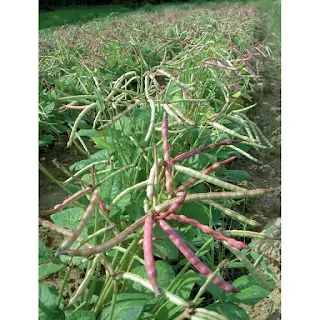One of the benefits of getting an education in engineering is that it trains you to ask the next logical question.
It also teaches you that the phrase "It is optimized" means nothing without context.
"Optimized" usually means that a desirable output is maximized relative to an input or an undesirable output is minimized relative to a specific input. But which input? Which output?
Sometimes the miscommunication is intentional. Somebody is trying to SELL you something and they let you believe what you want to believe.
Other times the miscommunication is unintentional. One person assumes an output/input combination while the other person assumes a different output, a different input or both.
Gardening
Consider something as simple as a garden in austere times.
The gardener can maximize calories produced in a given footprint. He might plant it all to corn or potatoes to achieve that.
Or a gardener might maximize flavor/footprint and grow hot peppers or garlic.
Or vitamins/footprint and grow all cabbage
Or protein (soybeans).
Most of the time we assume a fixed footprint and that is the implied denominator.
BUT there are situations when other denominators might be appropriate. For instance, if things went into the toilet very quickly or very stealthily then it might be difficult to purchase viable seeds. Then the number of viable plants per package of seeds or the multiplier from seeds planted to seeds harvested might be more appropriate.
To give you a sense of the range you might be working with, you might plant 40 pounds of potatoes and harvest as little as 400 pounds for a multiplier of 10. On the other hand, you might harvest 700 kernels of corn for each seed you put in the ground. That is almost two orders of magnitude difference.
I posed that question to Lucky, "Can you give me a SWAG regarding the number of cowpeas I might harvest per seed planted?"
He reminded me that the devil is in the details. He said that he planted 100 Black Cowpeas (a productive variety) last year. He reminded me that it was dry in Kentucky last summer so that pulled yields down. But on the other hand he planted the seeds 6" apart rather than the more typical 2" in the row so that would reduce the yield per square-foot but boost the yield per plant (seed) and his soil is pretty good.
I fiddled around and learned that 57ml of Black Cowpeas weighs 35 grams and that 25 seeds weighs 4.8 grams. Based on the volume of Lucky's harvest my best estimate of the multiplier is about 70X for Black Cowpeas.
Incidentally, Sand Hill Preservation Center offers over 40 varieties of cowpeas and countless number of varieties of butterbeans.

Thanks for the tip on Sand Hill
ReplyDeleteLooks like I may get some cow peas in the near future; the future is unstable until it's made to be stable.
ReplyDelete- Arc